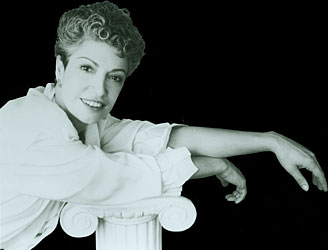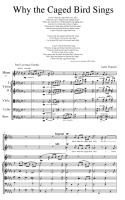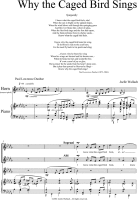Why the Caged Bird Sings [7.5']
Why The Caged Bird Sings finds the convergence of horn, piano and children’s voices’ to explore the tragic irony of the poetic text. The poem, by 19th Century African-American poet, Paul Laurence Dunbar, is a plaintive personal plea for freedom, an effective alternative to thrashing painfully and purposelessly against constraint.
Woven into Why the Caged Bird Sings’ overall lyricism are subtle timbral clashes which fortify the strength of the work and contribute to the excitement of performance: the innocent beauty of the children’s song, the horn’s heroic call and the piano’s lavish harmonic journey join forces to express the craving of the caged bird in each of us.
Essay on Why the Caged Bird Sings:
Sympathy
I know what the caged bird feels, alas!
When the sun is bright on the upland slopes,
When the wind blows soft through the springing grass
And the river floats like a sheet of glass,
When the first bird sings and the first bud opes,
And the faint perfume from its chalice steals –
I know what the caged bird feels
I know why the caged bird beats his wing
Till its blood is red on the cruel bars;
For he must fly back to his perch and cling
…I know why he beats his wing!
When his wings are bruised and his bosom sore, –
When he beats his bars and would be free;
It’s not a carol of joy or glee,
But a prayer that he sends from his heart’s deep core,
But a plea, that upward to Heaven he flings –
I know why the caged bird sings!
—Paul Lawrence Dunbar (1872 – 1906)




